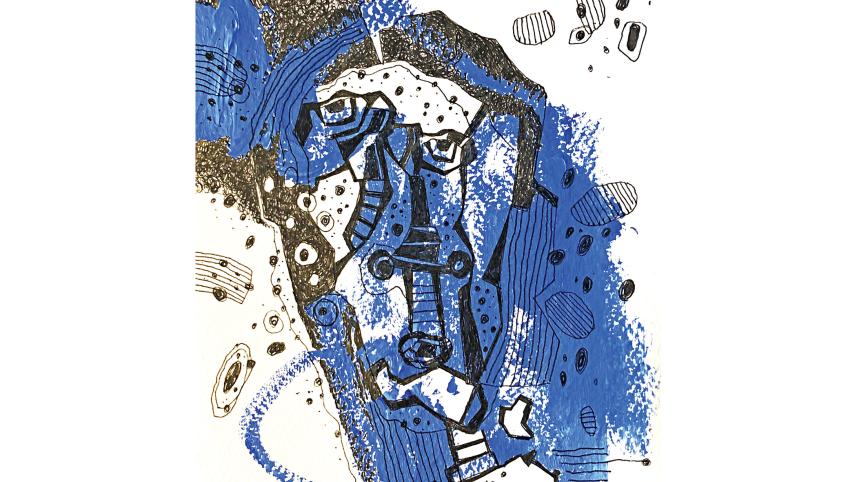Tajuddin Ahmed’s “Faces” reflects on human resilience

Tajuddin Ahmed, a renowned Bangladeshi artist, started working on his reflective series "Faces", when the Covid-19 pandemic hit. He put human faces under the microscope to create minutely detailed miniature paintings of men, women and children in different moods, shapes and shades. These paintings are executed in detail, and vary in sizes from standard letter size paper to some being as small as 1x1 inch. This collection of paintings reflects a major transition from Ahmed's large scale aerial abstract paintings that he is well known for, and are exhibited across Bangladesh at major banks and institutions.
Facial appearance is vital for human recognition and communication. Each face is unique and distinguishes a person and their personality. Ahmed's "Faces" is a tribute to his teacher and mentor Zainul Abedin, who fancied studying and painting faces. The artist's faces portray the strong desire and resilience of humans for survival and to fight the pandemic.

They are also a stark reminder that the pandemic is self-inflicted and that humans must stop playing with the balance of nature or be ready to face dire consequences. It has been scientifically proven that deforestations is leading to more infectious diseases in humans and has a direct relationship with the appearance of new viruses and diseases. The coronavirus pandemic is suspected of originating in bats and pangolins. It has brought the risk of viruses that jump from wildlife to humans into focus.
These interactions often happen at the edges of the world's tropical forests, where deforestation is increasingly bringing people into contact with animals' natural habitats. Yellow fever, malaria, Venezuelan equine encephalitis, Ebola – all of these pathogens have spilled over from one species to another at the margins of forests. This is why Ahmed's human faces have an assimilation of animal features and instincts.

His paintings of faces are complex abstract compositions. On closer examination, they appear to be present in their environment in mutated forms emulating the fragility of humans and their susceptibility to disruptive changes in the balance of nature. As Covid-19 is mutating into new forms and different strains of virus, it is playing havoc on humans.
Through his morbid yet profound paintings, Ahmed presents a stark reality – a warning for humans to stop their exploitation of nature or risk being wiped out from the face of this World.

The author is the founder and director of SAGA Foundation and South Asian Gallery of Art (SAGA) in Toronto, Canada. He is an art critic, writer, curator and collector.



 For all latest news, follow The Daily Star's Google News channel.
For all latest news, follow The Daily Star's Google News channel.
Comments